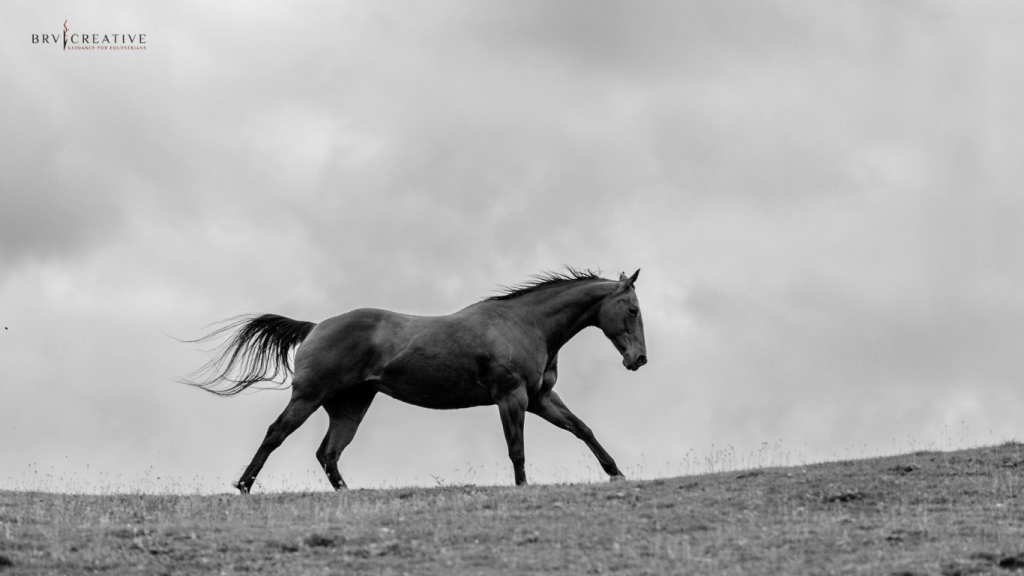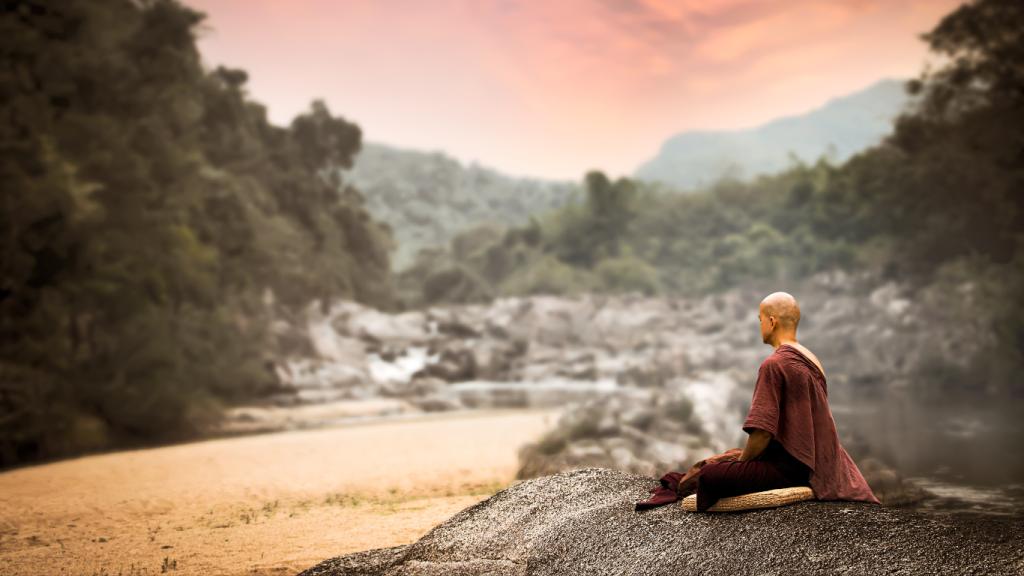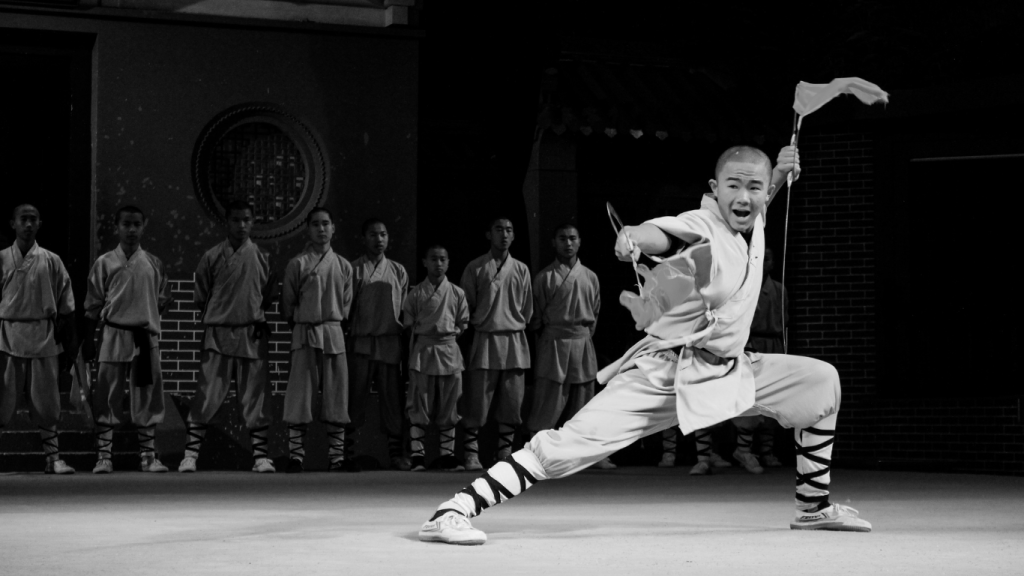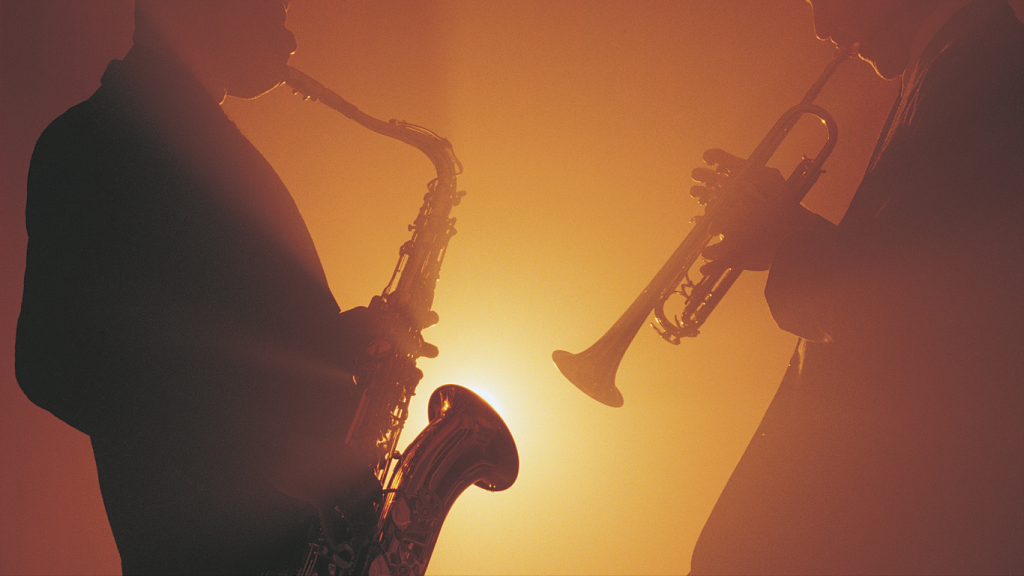The pause is another way of describing what we here at 21 Day Mindfulness Challenge describe as the gap. In this gap or pause there exists the the chance to take life into your own hands and become truly free, powerful & fulfilled – a grand statement from us you might think but we believe that the Masters of the Pause have been proving this for centuries.
Our nervous system is a powerful protector and it does a great job of keeping us safe without us even being aware. However, it bypasses the pause and so often goes straight from stimulus to reaction.
If we want to live adventurous lives that bring new, exciting possibilities and true meaning – we must be in the conductors chair. and engaging the pause is how we get there.
What is a stimulus?
Stimulus is a laboratory coat way to describe an event in your field of awareness – which is what the totality of your life is made up of. At the end of our day we have an accumulation of stimuli happening to us (that are both in and out of our control) and then our responses to those stimuli. There’s really not much else.
A stimulus could be:
- A word spoken to you
- A facial expression
- A sunlit scenery
- A thought in your own head
- A sensation through your body
- Your dog licking your hand
- The traffic light turning red
- A thought provoking phone call
- The clock telling you you’re late
What is a response?
In scientific terms, a chemical reaction is a process in which substances act mutually on each other and are changed into different substances. This is a reaction rather than a response. There is no choice involved for the substances. This happens to us more than we might think.
When a stimulus event happens to us – especially a negative or surprising one – our minds jump straight into action. Lit up with activity, the brain engages thoughts, beliefs and fears that have been pre-programmed into it, either through childhood or from a more ancient source, that biases survival – yes, even a phone call from your (barely tolerated) Auntie to say she’s coming to visit can elicit survival based reactions.
We might be socialised enough to respond kindly & calmly over the phone to dear Auntie but our automatic physiological response is having its own little party through our nervous system.
Engaging a pause would allow us to not only appear calm but really truly be calm through our entire nervous system.
Horses are Masters of the Reaction
A horse showcases how quickly a nervous system can react to a perceived threat.
In my work with horses I have witnessed their impressive lightening quick reactions to stimuli that have taken me a good few moments to even identify. Finally I might find a tractor in the distance or a flag over in the corner of the arena.
A frightened horse gives us insight into the part of the brain called the amygdala – the lizard part of the brain that is responsible for fight or flight. This reaction bias has kept us alive since our very dawn as humans, and horses, as prey animals showcase its effectiveness.
Running away from a rustle in the bushes is ideal in situations where a snake or a cougar might be lurking but as we have no snakes or cougars here in New Zealand, we train our horses to engage a pause and take a breath before reacting, keeping the nervous system calm so that we can continue our fun, adventurous ride.

So who are the Masters of the Pause and what do they do?
When we want to learn any skill, we turn to the masters of that skill to show us the way. If we wanted to learn how to play tennis, we might give Rodger Federer a call. He couldn’t do all the hours of practise for us but he could start us off with the right tools in hand.
Pausing between stimuli and response has been practised through many disciplines – here are three examples of those who show us how to master this pause.
Monks
Monks from Buddhist & Taoist traditions have long practiced and taught the ways of mindfulness through a variety of techniques and analogies. It is in their teachings where we will find the tools to create a mindful pause between stimulus and response.

Breath-work (Anchoring to the Present)
One of the most common practices in monastic life is breath meditation, where monks focus on their breathing to ground themselves in the present moment. In times of stress or reaction, the breath serves as an anchor.
- How it helps: When we face a stimulus that triggers an emotional reaction, we often lose touch with the present moment. By focusing on the breath — slow, deep, and deliberate — monks teach us how to regulate our nervous system and return to a balanced, calm state before responding.
Non-Attachment (Letting Go of Reactivity)
The principle of non-attachment is central in many monastic teachings, particularly in Buddhism. This doesn’t mean detaching from life, but rather detaching from the need to control or react to every situation. Monks learn to observe thoughts and emotions without identifying with them.
- How it helps: In the pause between stimulus and response, monks teach us to let go of our automatic attachment to feelings, desires, and judgments. Instead of immediately reacting based on fear, desire, or anger, monks practice observing their thoughts and emotions without judgment. This creates the space to choose a response based on wisdom, rather than being driven by habitual patterns.
The Wisdom of Impermanence
Impermanence is a key teaching in Buddhism, reminding us that all things, including emotions, pass away. Monks practice recognising that feelings, sensations, and thoughts are transient.
- How it helps: When we recognize that negative emotions (like anger, anxiety, or frustration) are fleeting and impermanent, we can pause before reacting. The pause becomes a natural space in which we can remember that “this too shall pass,” allowing us to respond with greater wisdom.
Martial Artists
In martial art practices like Aikido, Jiu-jitsu, Karate, Judo or tai-chi, we see a powerful visual representation of a controlled and centred response to stimulus in real time. Masters in these realms almost appear as elegant dancers as they put their mindfulness skills into full force.

Focus on Timing, Not Force
Martial arts teach that timing is often more important than strength. The concept of timing involves waiting for the perfect moment to strike or defend, which requires an ability to pause and observe.
- How it helps: Rather than reacting immediately with brute force or out of panic, martial artists learn to wait for the optimal moment when they can act most efficiently and effectively. The pause in this context is the time to measure the distance, read the opponent’s intentions, and calculate the best response.
Relaxation and Calmness Under Pressure
One of the key teachings in martial arts is to stay relaxed, even under pressure. Tension can cloud your judgment and impair your ability to respond effectively. In high-stress situations, such as a confrontation or a tournament, martial artists are trained to stay calm and not allow their emotions or fear to take control.
- How it helps: By practicing relaxation techniques, martial artists develop the ability to pause and make decisions from a place of mental clarity. The longer you can stay calm, the more time you have to think, plan, and react appropriately.
Embracing the Flow State (No-Mind)
In many martial arts, there’s a concept called mushin (無心), often translated as “no mind” or “empty mind.” This refers to a state where the practitioner’s mind is clear of distractions and judgment, and they are fully present in the moment. In this state, the distinction between stimulus and response disappears — the reaction happens automatically, but it’s the result of deep practice and inner clarity.
- How it helps: In the mushin state, martial artists are not consciously thinking about their next move. Instead, their training has so deeply ingrained the correct responses that they happen without effort, but with maximum efficiency. This state requires the ability to pause mental distractions, remove fear, and rely on the body’s muscle memory.
Breathing and Centering
Breathing is an essential element in martial arts, and martial artists use specific breathing techniques to control their energy and calm the nervous system. This includes practices like diaphragmatic breathing or synchronised breath with movement.
- How it helps: Breathing techniques regulate the body’s stress response, which slows down the physical reactions and mental processing. In moments of intense pressure, a martial artist who has mastered the pause will use their breath to regain composure and clarity. This pause lets them respond rather than react.
Improvisation Musicians
This category might surprise you but just like martial artists, masters of improvisation can show us a beautiful representation of what it means to add a pause between stimulus and response.
Improvisation is the art of creating something in the moment, without prior preparation.
While it may seem that improvisers act without thinking, the truth is that they are masters of attunement — using the pause to deeply listen, observe, and respond in real-time to the ever-changing flow of the environment or their collaborators. Improvising artists are trained to pause, reflect, and then respond in a way that is both immediate and deeply creative.

Active Listening and Awareness
Improvising artists, especially in music or theater, rely heavily on active listening. They must be aware of their surroundings and fully attuned to their fellow performers. The pause here is the time when the artist absorbs the incoming stimuli — whether it’s a note played by another musician, a gesture in a dance, or a line of dialogue spoken by an actor — and then uses that awareness to decide their next move.
- For example: In jazz, a great improviser will often pause just before responding to a musical cue, taking a moment to process the tonal qualities, rhythm, and emotion of what’s happening around them. That pause allows the musician to respond with something entirely unique, often creating magical, unexpected moments. The space between each note, each phrase, is just as important as the notes themselves. Miles Davis, a master of jazz improvisation, was known for his ability to create deep emotional resonance through the pauses between his trumpet phrases.
Flow and Spontaneity
Improvising artists rely on the principle of flow — a state of deep concentration and immersion in the present moment. The pause allows the artist to stay grounded in the moment and respond with authenticity, without overthinking or pre-planning their actions. This spontaneous creativity relies on trust — trust in their skills, in their partners, and in the moment itself.
- For example: In improvised dance, a dancer might pause between movements to gauge their partner’s next move or to feel into the space. This pause isn’t hesitation — it’s a way of being in tune with their body, their environment, and their creative instincts. The pause allows them to enter a flow state where movement arises naturally, without force.
Gain Control of Your Destiny by Engaging the Pause
We are more than just a nervous system but it’s realising the awesome power of this electrical current that can help us become masters of it. Rather than being taken for a ride when one of the millions of stimuli come at us, engaging a pause puts us back into the conductors chair.
Practising the pause – especially through breath work – will give us back the control and free will that we can use to shape the rest of our lives.
Small at first, it will grow and this pause will truly make us the Masters of our Destiny.

